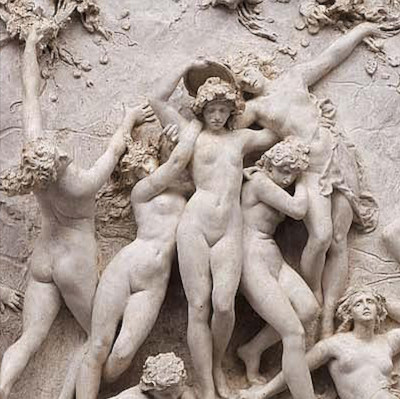Sculpture is certainly one of the lesser known elements of Gustave Doré's career. He enjoyed working within this medium but would never be able to devote enough time to building up a strong reputation as a sculptor.
Gustave Doré will always be most famous as an illustrator, with his exceptional drawings embellishing a series of books during the mid to late 19th century. He did, however, sometimes see this medium as a means to an end, or at least this was suggested by a number of throw-away comments that he made about it at various points. Surely he could not have achieved the extraordinary artworks that he did without a strong level of passion and motivation? What we can be sure of, though, is that the vast majority of his income came from the book illustrations and so perhaps the commercial nature of this medium started to lose its appeal over time. By contrast, his work with painting and sculpture was something that came in and out of his career and this perhaps helped to retain a freshness in his mind. The items of sculpture that we have left from his career are diverse, in everything from the size, to the content and even the materials used. This suggests an artist at the start of his work with sculpture who wants to explore as many possibilities as he can.
We do have some modello's left over from his career which were study pieces, often for the purposes of gaining commissions. Most were not then turned into full scale sculptures, suggesting that there was no time available for the larger project, or that perhaps the potential patron had rejected the idea out of hand. Even the great sculpture masters, such as Michelangelo and Donatello, would offer models in this manner and it was an effective way of reducing alterations at a later date. Cupid and Time, a modello in terracotta, is one example of Doré's sculptures and it follows closely the Romanticist approach which spread to all aspects of this artist's oeuvre. Of a relatively similar size was a clock with Time defeating Loves that was cast in Bronze in 1879. The artist would certainly have had considerable help in putting this piece together, but the design of the clock itself would have been very much his own work. Much of the information surrounding Gustave Doré's small output of sculpture remains untranslated from its original French form, meaning there is potentially more documentation out there than has currently been collated.
Most believe that Doré's first serious use of sculpture came about in 1871, relatively late in his lifetime. He had already mastered illustration and painting by this point, and so perhaps required one last challenge. We believe that his first published piece arrived as late as 1877, with this discipline being particularly hard to master, even for someone with such natural artistic abilities. One advantage that he had by this point was a strong network of patrons from his illustration work, some of whom potentially might finance new sculptural projects. He also had a strong team of engravers and illustration assistants who could keep his main business running fairly smoothly without too much involvement from himself. Ultimately, we have more sculpture models left over from his career than completed projects, which suggests that perhaps he ran out of time in the end and was never able to achieve the heights as a sculptor that he had hoped. Some records from his lifetime have quoted him as being frustrated at his level of success outside of illustration, and so there was no shortage of motivation when it came to his sculptures.
Gustave Doré's Most Famous Sculpture
Perhaps the artist's best known piece within this medium would be Maenads in a Wood, a large piece which currently resides within the Museum of Fine Arts in Boston, USA. This piece is around two metres in width, and just over a metre in height. It is made entirely from plaster and features a large amount of detail, and is perhaps the best example to exist today from all his remaining sculptures. The Boston institution purchased this piece back in 1994, making it a relatively recent addition to their collection. A dozen nymphs are strewn around this enjoyable scene, and the theme is related to Death of Orpheus, which he also covered in oils at around the same time. Despite his relative inexperience in sculpture, particularly from a commercial sense, we can see from Maenads in a Wood that he remained ambitious and brave as an artist, in whatever medium he was working. This particular piece is dated to 1879 and changes hands several times between French and American collectors before arriving at its current location.




